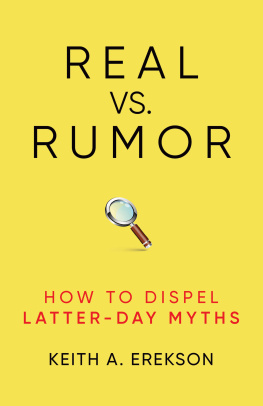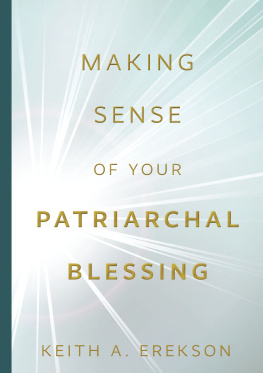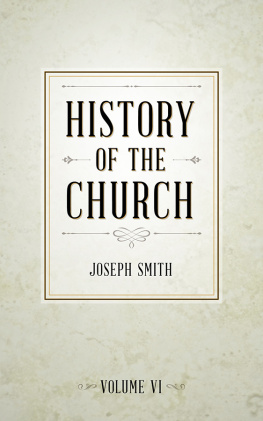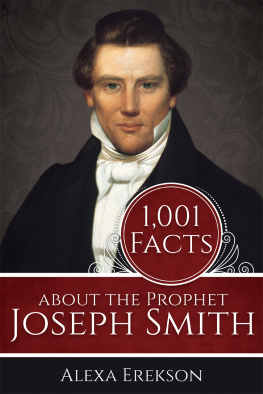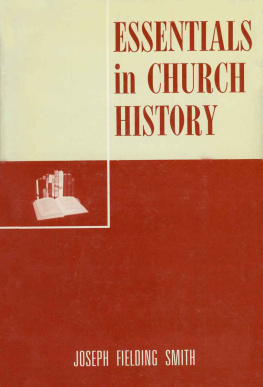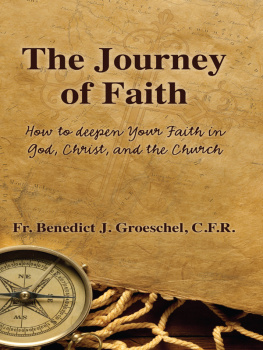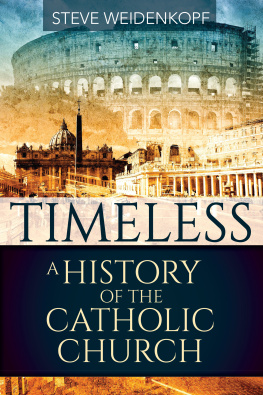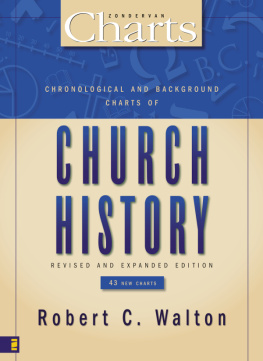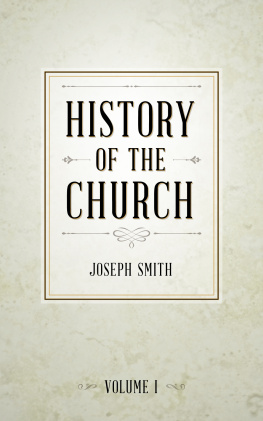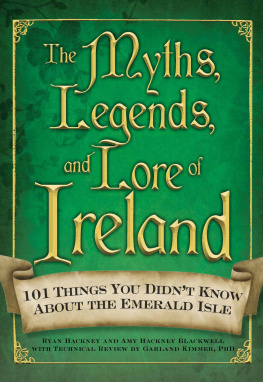Contents
Introduction
Our Day of Rumors
The rumors shot through the crowd like lightning. Murder! Enemy infiltration! The tyrant got what he deserved! Each newcomer gaped in horror at the motionless bodies scattered on the groundthe king, the queen, their servants, and also... the foe. Nasty outsider! Evil specter! More like a monster! Speculation mounted into sharp contention as a woman arrived. Everything was wrong! She had seen what really happened; it was she who had run excitedly to call the crowd. Knowing she could only quash the rumors with something real, Abish reached out and took the queen by the hand (see Alma 19:1729).
We, too, live in a day when rumors and myths mingle with reality and cause confusion, concern, and contention. To survive, we must find and grab hold of the real from amid the rumor, but frequently the two are closely entangled. Forgers write fake words on actual historical paper; con artists couch a long lie in many short truths; spokespeople offer finely parsed words that sound like a lot but commit only a little. Today rumors appear as errors, falsehoods, legends, family lore, false quotes, lies, misleading misinformation, and deliberately distorted disinformation. Sometimes the word myth is used to describe simple errors that stand in opposition to facts. But a myth can also be a sweeping cultural story that lives deep in our minds and underlies our actions. Surrounded as we are by myths and rumors, the best protection lies not in memorizing every possible fact or in debunking simple errors but rather in knowing how good thinking works. Just as Adam and Eve needed to taste the bitter, that they may know to prize the good (Moses 6:55), so can we dissolve rumors by recognizing what is real.
Though misinformation exists in every arena, Real vs. Rumor focuses on making sense of the rumors, myths, and complicated twists of Church history. As members of The Church of Jesus Christ of Latter-day Saints, we regularly engage history in our devotions. We read and liken writings of ancient and historical scripture to our present day, study Church history as part of our Sunday curriculum, give talks and teach lessons about historical events, study our familys history, sing hymns about Joseph Smith and the pioneers, and share quotations from past leaders online and on handouts. Indeed, the doctrine and practices of our Church are rooted in our history and have been revealed over time, line upon linean ongoing process of restoration that continues in our time.
Given that history is nearly everywhere in Latter-day Saint life, its no surprise that we frequently encounter rumors and myths. It never ceases to amaze me, President Harold B. Lee observed, how gullible some of our Church members are in broadcasting sensational stories, or dreams, or visions, or purported patriarchal blessings, or quotations, or supposedly from some persons private diary. Antagonists distort the Churchs history, and some Saints abandon their faith because they cant make sense of the past or discern present manipulations.
Such distortions are certainly not unique to the Saints. Social media floods our streaming consciousness with photoshopped images, deep-faked videos, and unattributed texts. Politicians tell bald-faced lies in public and then dismiss fact checkers as liars. Studies reveal that few Americans know how to verify information they encounter on the internet. Belonging to the same group in person or online makes us less likely to check the facts shared by our peers, and one recent study found that false headlines travel even faster on social media than true ones!
Real vs. Rumor offers practical advice for both developing good thinking skills and receiving divine inspiration, for investigating by study and also by faith (D&C 88:118). President M. Russell Ballard exhorted gospel teachers to train learners in the skills and attitudes necessary to distinguish between reliable information that will lift them up and the half-truths and incorrect interpretations of doctrine, history, and practices that will bring them down. This book presents many concrete examples from history, scripture, and popular culture to clarify what we know as well as to prepare you for the next rumor you encounter, whether it be an exaggerated story or a forged website or antagonistic writing or a false quote in class.
The strategies and skills I share in here are techniques I use each day as a public historian. I have researched, written about, and taught these skills for nearly two decades. I know the techniques work because Ive witnessed their impact in the lives of so many people.
Real vs. Rumor is organized into three parts. We begin to improve our thinking by exposing the myths within us that keep us from seeing what is real. Most of these errors lie hidden within our cultures, traditions, and thinking. Even the Saints are slow to understand, Joseph Smith observed. We frequently see some of them, after suffering all they have for the work of God will fly to pieces like glass, as soon as anything comes that is contrary to their traditions. We think we know everything, we dont ask for evidence, we assume, we fail to see the interpretations made by others, we limit our options, and we get distracted by insignificant details.
This book teaches you how to investigate rumors and realities by learning to survey the situation, analyze the contents, connect the contexts, and evaluate the significances.

Part II applies the skills and habits learned in part I to investigate three meanings of the English word history . Sometimes people use the word to refer to the past, as when speaking of the people and places and things of the olden days that happened in our history. All that survives of the past are pieces, such as old letters, photographs, and diaries, which we call sources . Other times, people use the word history to refer to stories about the past, as when saying I read a history of the early Church. Finally, the word history can be used to describe a formal study of the past that surveys all relevant sources and previous stories. Sources, stories, and studies may contain rumors and myths, so to discern if we can trust them, we investigate to corroborate accuracy, verify authenticity, and judge reliability, fairness, and comprehensiveness.
Part III extends the investigative skills and habits into personal efforts to dispel the rumors and myths around us. We are responsible to learn all that we can, quote responsibly, help others who struggle, and understand Gods dealings.
To help you learn and remember, Real vs. Rumor features repeated elements. Each chapter opens with a vignette of a modern rumor from Church history and features abundant examples. Throughout the book, I introduce simple, memorable, and descriptive sayings about how good thinking works. Thinking habits are skills that combine study and faith to make sense of rumors, myths, and history. Along the way, youll also find my recommendations on the best resources to improve your skills as well as everyday encounters that translate the concepts and habits to everyday life. Every chapter ends with a You Try It section that summarizes key concepts and introduces sniff tests , or clues that something just isnt right. You need not become an expert on every subject to recognize when good thinking is not being used. Like Abishs Lamanite queen who asked Ammon about her husband Lamonis health, you may not be a medical expert, but you can tell when something stinks or not (see Alma 19:112).

